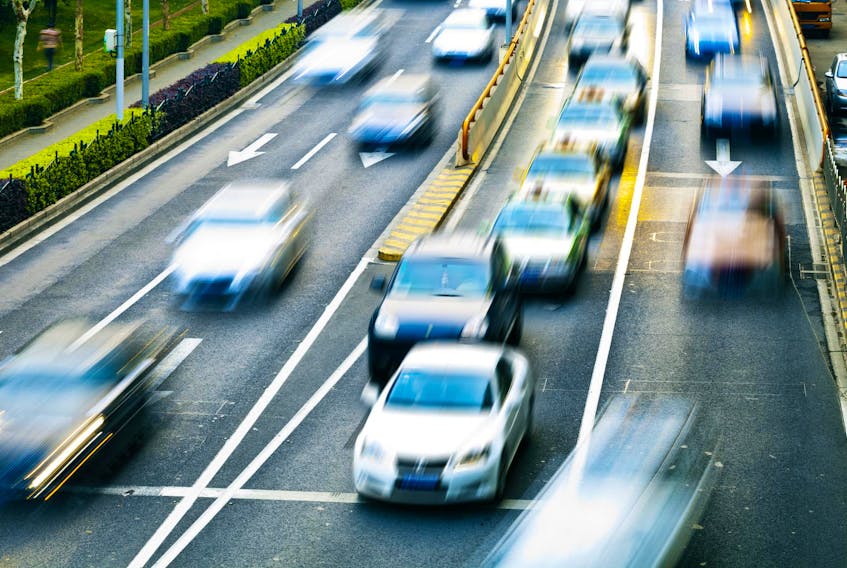You don’t really see the accordion much anymore. The squeeze box or concertina is played by compressing or expanding a set of bellows while pressing buttons or keys. You may not see it online or on a concert often, but I’ll bet you’ve experienced the “accordion” on the road.
Anyone who travels a heavily congested road on a regular basis has experienced what is known in traffic safety circles, as the “accordion effect.” As vehicles slow, those behind do so as well. As the lead accelerates back up to speed, so do those following.
But this slowing and speeding cycle takes on a whole new significance when drivers are following too closely. What happens in this case is highly exaggerated slowing down and speeding up. Like waves in a still pool that spread outward from the point of contact, the reduction in speed is echoed through the string of following traffic.
Then as the first vehicles resume speed, those following, because of the delay caused by reaction times, have to accelerate even faster to maintain the pace. This excessive acceleration is repeated and down the line, growing in speed until those first vehicles resume a cruising speed and the following have to slow to that speed, this in turn causes motorists further down the chain to have to actually brake after accelerating hard to catch up.
Watched from above, as in a plane, it is actually funny to watch this phenomenon as it looks exactly like that the instrument it is named after — the accordion — with waves rippling through the traffic stream. You can even forecast its occurrence, usually based upon a stalled vehicle, crash site or vehicle joining or slowing to leave the stream of traffic. The first vehicles slow, those following slow more suddenly etc. and the traffic string condenses. Then, having passed the scene of interest or the slower vehicle, the first vehicles in the line accelerate and the string stretches out etc.
It is also common practice for one slow motorist — say somebody chatting away on a phone with attention on the conversation instead of driving, to create a lengthy wave or reaction as vehicles are forced to slow when following and then speed up when they get by.
Little can be done about this issue as long as drivers follow too closely and react to distractions on or near the road. On a heavily trafficked road, it is easy to preach safe following distance, but almost impossible to practice. The best bet is to leave as much room as possible and practice lane selection and etiquette that allows you to do so. Stay away from situations where your view is blocked and you cannot see the traffic flow well in front of you. As a general practice, it is much safer to rely on your sight and reactions than those of the driver ahead. Looking far down the road will alleviate much of the need to slow or accelerate excessively.
If you can see a situation developing, you can start to slow more gradually than would be the case if you are reacting to the brake lights of the vehicle in front of you. This more gradual change in velocity will have a smoothing affect on following traffic.
Put more graphically, at highway speeds you will travel about 35 metres every second. A really good reaction time for a young alert adult with excellent vision and reactions is about one-quarter of a second, but more commonly one-half to three-quarters of a second. So, once you see the brake lights of the vehicle you are following, you will travel at least 15 metres before you even get your foot to the brake pedal, using up the space between you and the person in front. And you haven’t actually done any slowing or braking yet!
If, on the other hand you can see well down the road and identify a situation that will require a change in speed, you can start to accelerate or ease off the gas, cover the brake and adjust speed according to need.
Let’s face it, there is no possibility of altering the behaviour of rubber-neckers who must slow to a crawl at the site of a collision or anything else of interest. But if you can see the situation developing well down the road, you can adjust speed and/or lanes gradually and your motions will have a calming effect on those behind.
Driving is a visual exercise. The more you can use and rely on your vision, the safer you will be.









